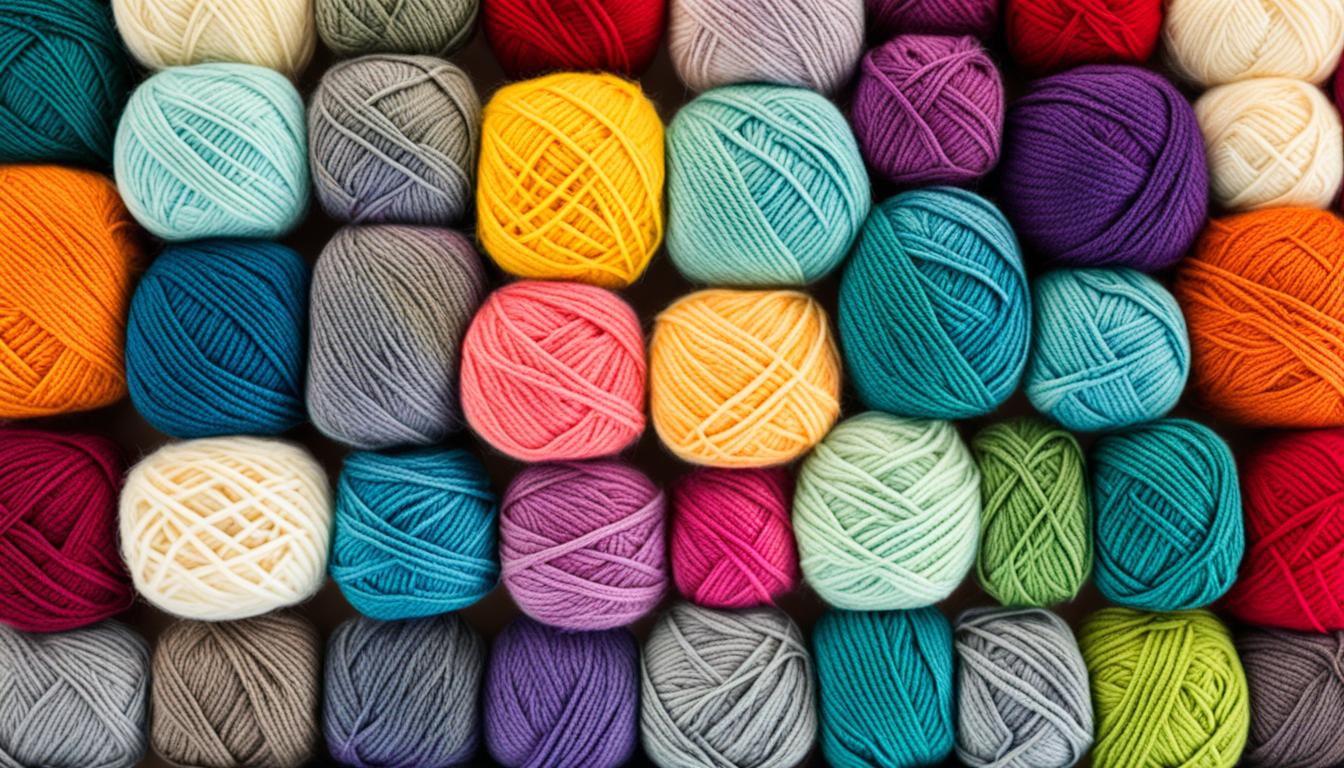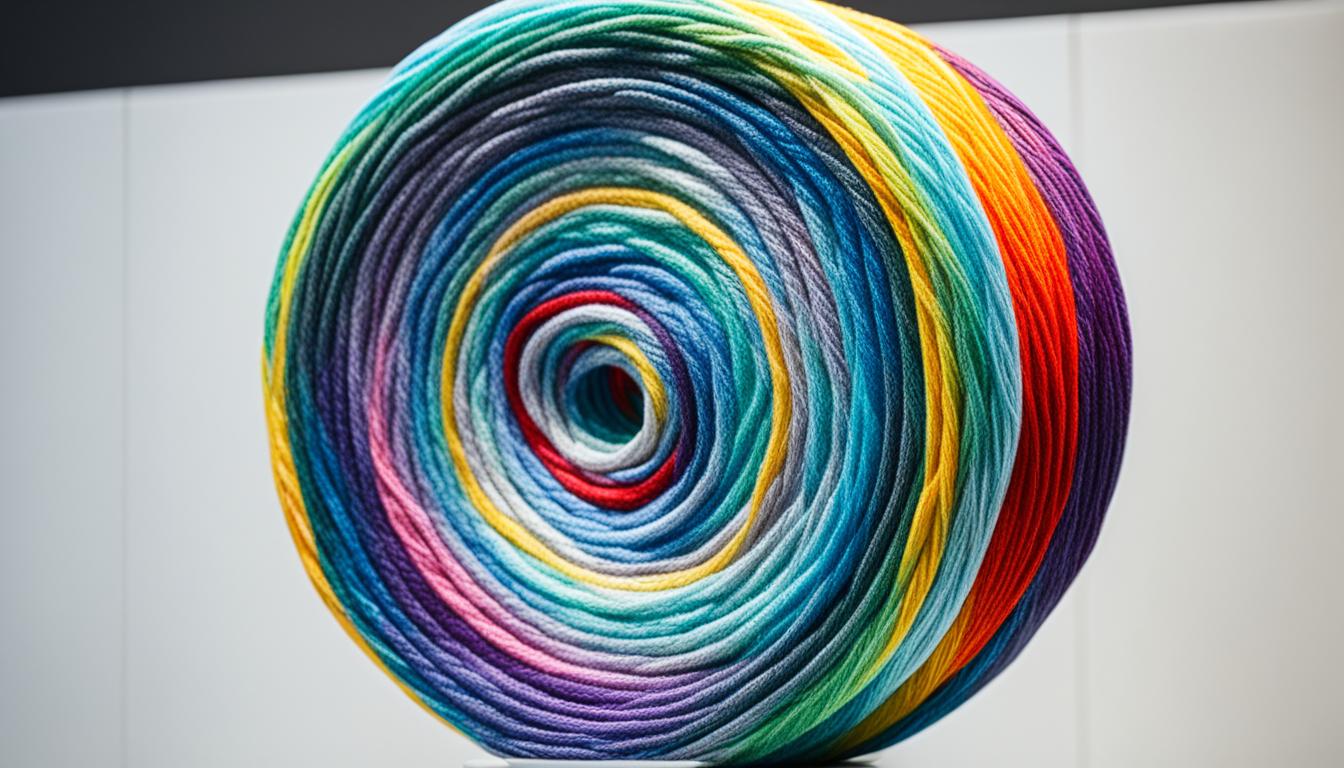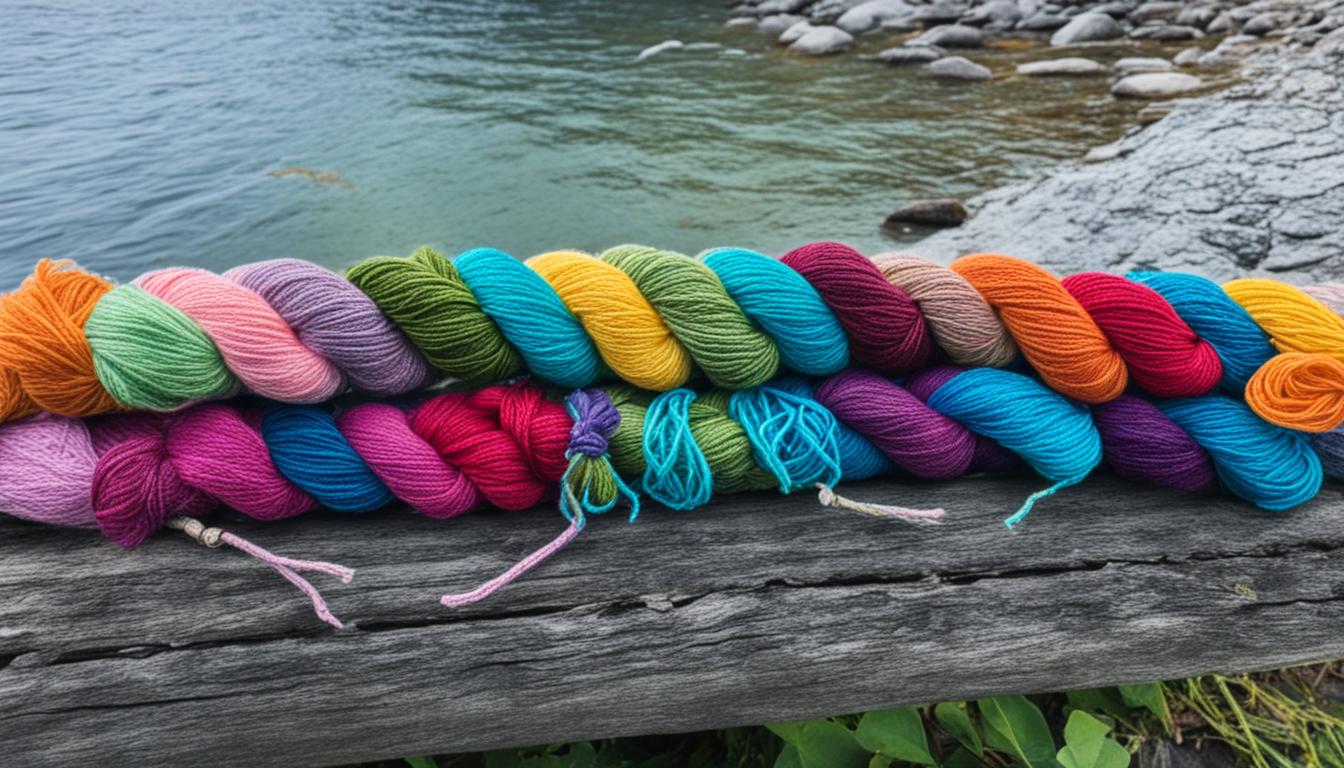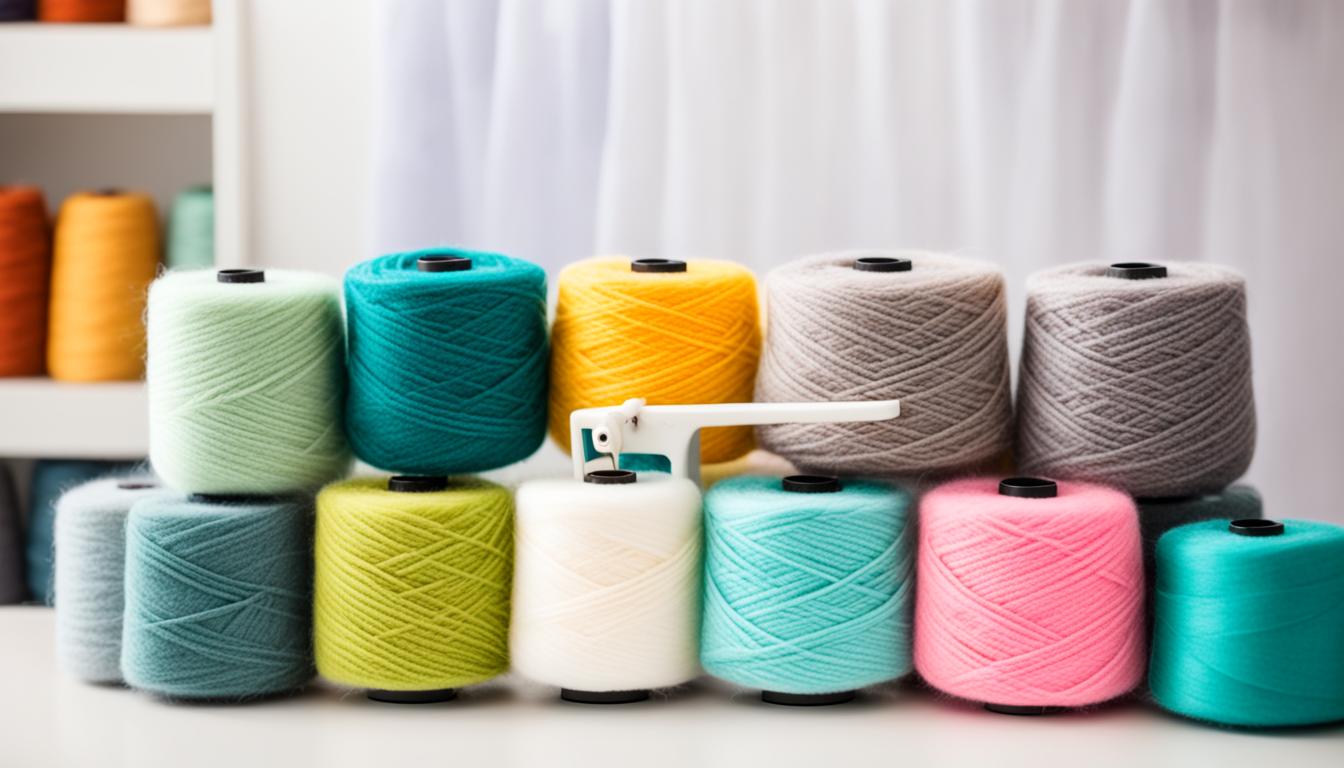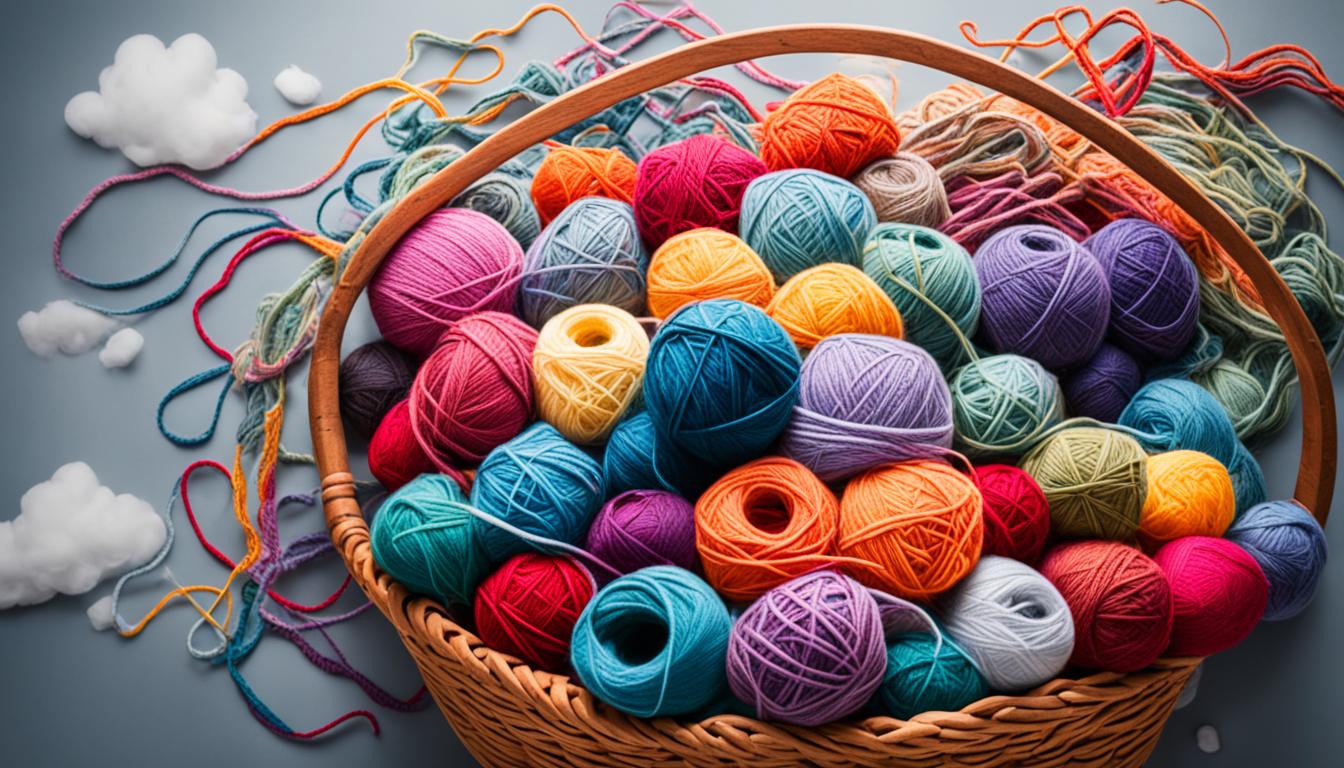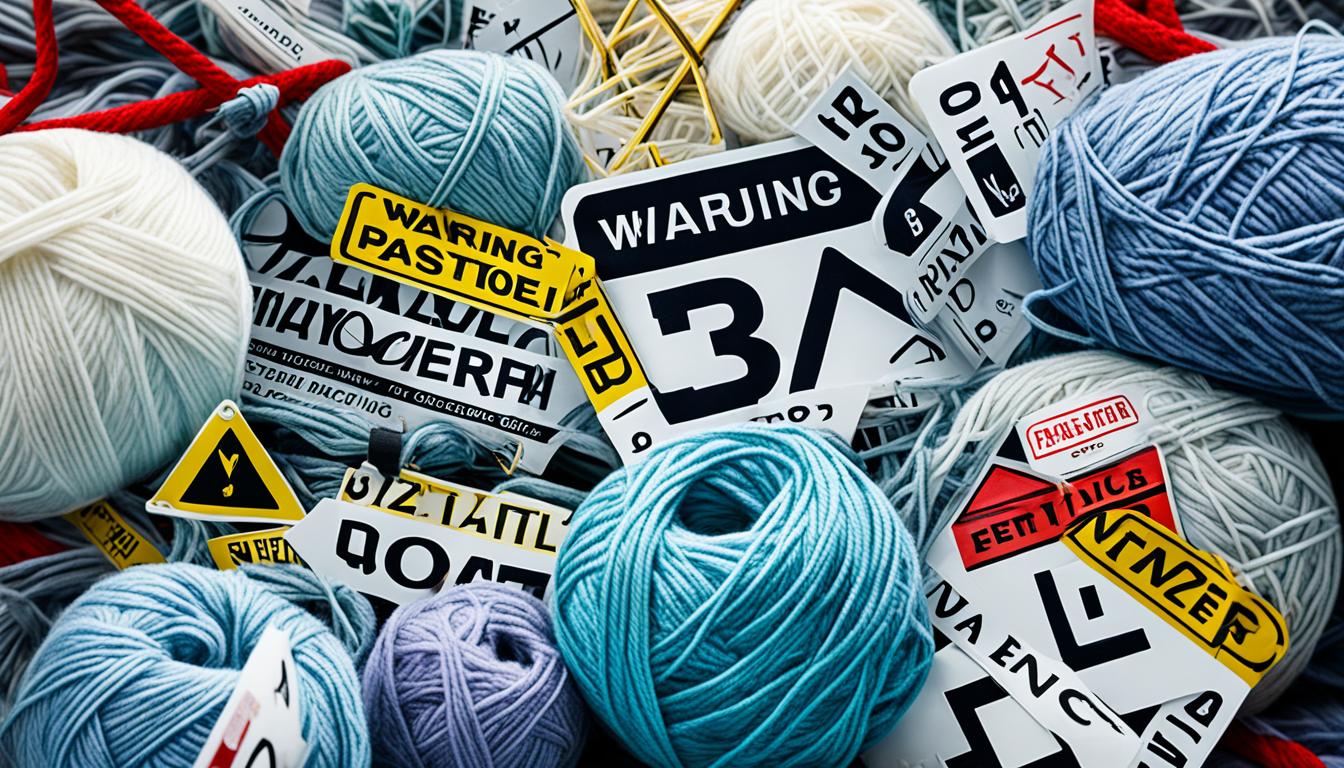Have you ever pondered about the actual length of a yarn skein? The length of yarn skeins can vary significantly based on different factors. So, how do you calculate yarn length and select the appropriate size for your knitting projects? Let’s uncover the mystery together.
In this article, we will explore the different factors that determine the length of yarn skeins and provide a guide on how to measure and calculate yarn size accurately. Whether you’re a seasoned knitter or just starting out, understanding yarn lengths is essential for ensuring you have enough yarn for your projects and avoiding any unexpected surprises.
Key Takeaways:
- Yarn skeins come in various lengths, and it’s important to measure them accurately for your knitting projects.
- Factors such as yarn tension, relaxation, and shrinkage can affect the final length of a yarn skein.
- Calculating yarn size involves measuring the length of the yarn strands and multiplying it by the number of strands in the skein.
- Yarn labels provide information about the length of the yarn, which is crucial for determining yarn consumption and selecting the right yarn for your patterns.
- While matching the recommended yarn length is ideal, it’s possible to adjust calculations when using yarn with a different length.
Factors Affecting Yarn Length
When it comes to yarn skeins, there are several factors that can affect their length. Understanding these factors is essential for accurately estimating the amount of yarn needed for your knitting projects. Let’s explore the key factors that can impact the length of a yarn skein.
Yarn Tension
One of the main factors that can affect the length of a yarn skein is yarn tension. When yarn is wrapped tightly on a niddy noddy or similar tool, it is under tension, which can stretch it slightly. However, once the yarn is taken off the tool and allowed to relax, it may shrink back to its original length. This relaxation can result in a slightly shorter yarn skein than its initial measurement.
Shrinkage
Another factor that can impact yarn length is shrinkage. When yarn is washed, it may undergo further shrinkage due to the fibers tightening up. This shrinkage can cause the yarn skein to become shorter than its original measurement. It’s important to consider this potential shrinkage when calculating the amount of yarn needed for your project to ensure you have enough to complete it.
Spinning Technique and Grease
The type of spinning technique used to create the yarn and the presence of grease can also affect its final length. Different spinning techniques can result in variations in yarn density, which in turn can impact the yardage of the skein. Additionally, if the yarn contains natural oils or grease, it may undergo changes in length when washed or processed. These factors should be taken into account when estimating yarn size.
By understanding these factors affecting yarn length, you can make more informed decisions when choosing and using yarn for your knitting projects. It’s essential to consider yarn tension, potential shrinkage, spinning techniques, and grease content to ensure you have the right amount of yarn to complete your project successfully.
| Factor | Description |
|---|---|
| Yarn Tension | The tightness of yarn wrapping on a tool can affect its length when relaxed. |
| Shrinkage | Yarn may undergo further shrinkage when washed, resulting in a shorter length. |
| Spinning Technique | Different spinning techniques can impact yarn density and, consequently, its yardage. |
| Grease Content | The presence of natural oils or grease in the yarn can influence its length when processed. |
Calculating Yarn Size
When it comes to determining the size of your yarn skein, accurate measurements are key. By following a simple process, you can calculate the exact yardage of your skein and ensure you have enough yarn for your project.
First, it’s important to wash and dry your yarn skein before calculating its size. This helps to remove any potential shrinkage or stretching that may occur during the washing process. Once your yarn is clean and dry, you are ready to measure its length.
To get started, count the number of strands in your skein. This will vary depending on the thickness of the yarn you are using. Next, hold the skein stretched out between your hands, making sure it is straight and not tangled.
Using a tape measure, measure half the length of the skein. This will provide an accurate measurement that takes into account the full length of the yarn. Remember to measure from end to end, excluding any additional tails or fringes.
Once you have the measurement, multiply it by two. This accounts for the full length of the skein and ensures an accurate yardage calculation. Next, multiply the resulting value by the number of strands in the skein. This will give you the total yardage of your yarn skein.
For example, if your measured length is 20 inches and you have 4 strands in your skein, the calculation would be as follows: 20 inches x 2 = 40 inches. 40 inches x 4 strands = 160 inches, or approximately 1.47 yards.
By following this method, you can accurately calculate the size of your yarn skein and ensure you have the right amount of yarn for your knitting projects. Happy knitting!
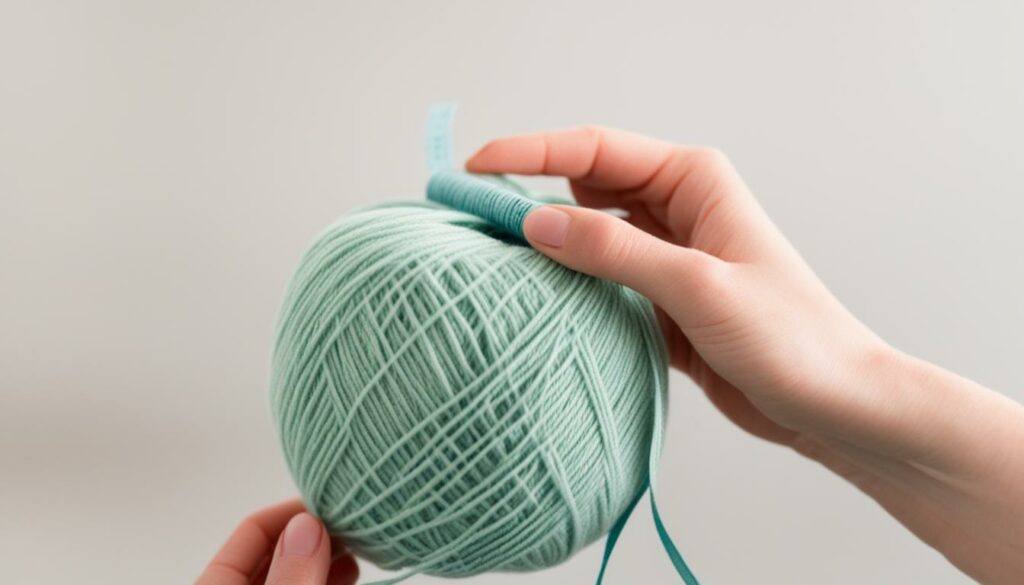
Understanding Yarn Length on Labels
When it comes to purchasing yarn for your knitting projects, it’s essential to understand the information provided on yarn labels. One important detail is the yarn length, which is usually stated in yards or meters. Knowing the length of the yarn can help you determine how much yarn you’ll need for a specific project, calculate yarn consumption, and select the appropriate yarn for your patterns.
Yarn length on labels is typically specified in relation to a certain yarn weight. For example, a label might state that the yarn is 100 yards long and weighs 50 grams. This information allows you to estimate the amount of yarn required based on the weight specified in your pattern or project instructions.
To calculate yarn consumption accurately, you’ll need to have an understanding of how much yarn you typically use for different projects. This can vary depending on the stitch pattern, gauge, and size of the item you’re knitting. By considering the yarn length on labels and the specific requirements of your patterns, you can ensure that you have enough yarn to complete your project without running out.
Understanding the yarn length on labels is crucial for selecting the right amount of yarn and ensuring a successful knitting project.
Here’s an example of a table that can help you estimate yarn consumption based on the yarn length specified on labels:
| Yarn Length (yards) | Yarn Consumption |
|---|---|
| 0-100 | Small accessories |
| 100-300 | Hats, scarves, mittens |
| 300-500 | Shawls, small sweaters |
| 500-1000 | Medium-sized sweaters, cardigans |
| 1000+ | Large garments, blankets |
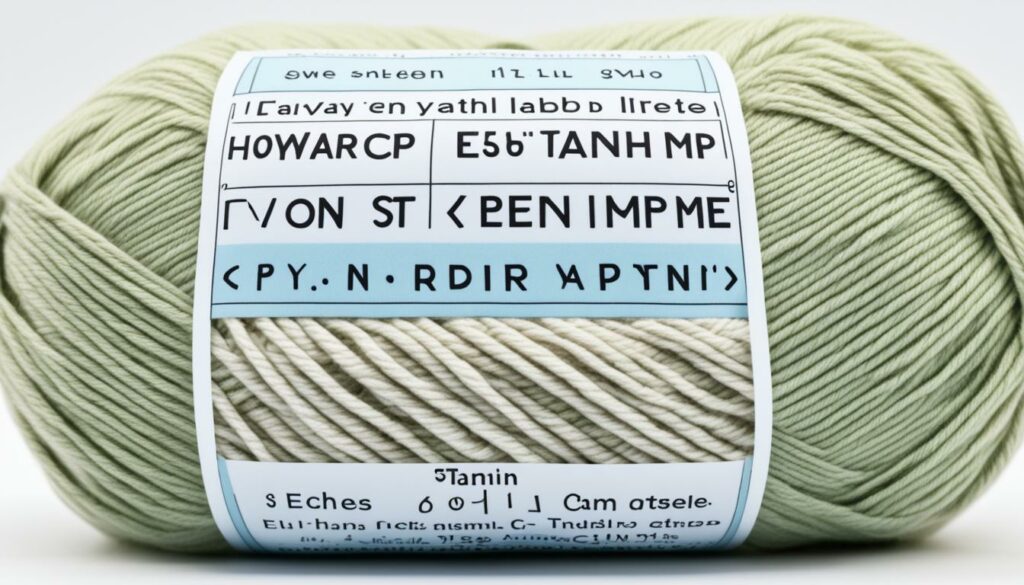
As you can see, the yarn length on labels provides valuable information for estimating yarn consumption and selecting appropriate yarn quantities for your projects. It’s always a good idea to have a little extra yarn on hand to account for any unforeseen changes or modifications to your pattern.
Using Different Yarn Lengths
When working on a knitting project, it’s crucial to match the recommended yarn length specified in the pattern. However, there may be instances where you have a different length of yarn on hand. Fortunately, with some adjustments to your calculations, you can still use yarn with a different length and successfully complete your project.
To begin, determine the total length of yarn required for the pattern you’re working on. This can typically be found in the pattern instructions or yarn requirements. Next, compare this total length to the length of the yarn you have. This will help you determine if you have enough yarn for your project or if you need to make any adjustments.
When using a thicker or thinner yarn with a different length, it’s important to consider the impact on your pattern requirements. A thicker yarn may require fewer skeins due to its bulkier weight, while a thinner yarn may necessitate more skeins to achieve the desired yardage. Take note of the yarn tension as well, as it can affect the overall length.
Here’s a simple formula to calculate the number of skeins needed when using a different yarn length:
Number of Skeins Needed = Total Length Required / Length of Chosen Yarn
It’s always a good idea to have a little extra yarn on hand to ensure you have enough to complete your project. Additionally, consider the pattern requirements to determine if any adjustments need to be made to account for the different yarn length.
Remember, matching the yarn length in a pattern is ideal, but with proper calculations and adjustments, you can confidently work with a different yarn length and still achieve beautiful results.
| Pattern Yarn Length | Length of Chosen Yarn | Number of Skeins Needed |
|---|---|---|
| 400 yards | 250 yards | 1.6 skeins |
| 300 meters | 450 meters | 0.67 skeins |
| 500 yards | 350 yards | 1.43 skeins |
Using different yarn lengths allows for flexibility in your knitting projects. With accurate calculations and considerations for pattern requirements, you can confidently work with the yarn you have on hand and create beautiful and unique pieces.
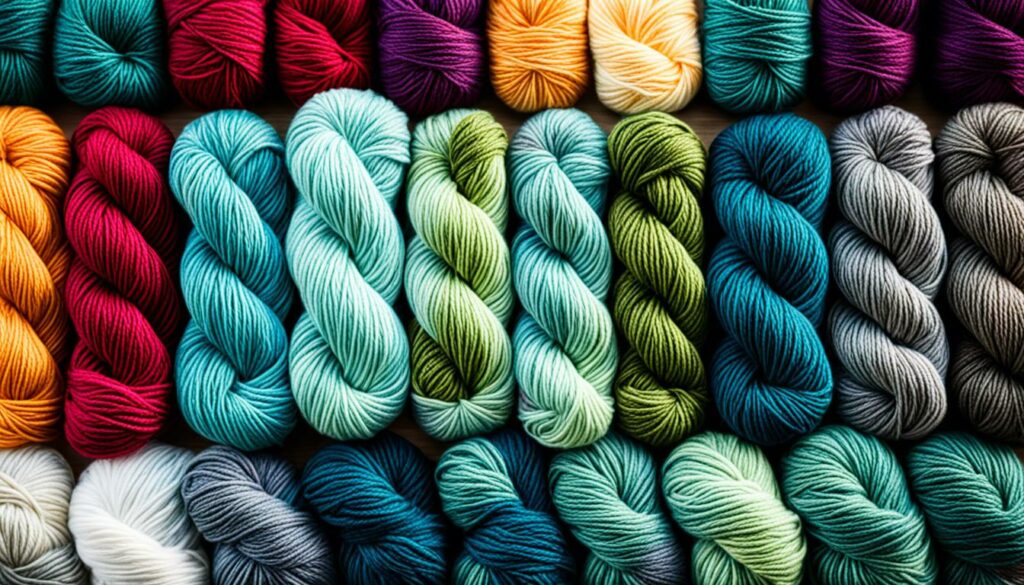
Different Shapes of Yarn
Yarn comes in various shapes, including skeins, balls, hanks, cakes, and cones. Each shape has its own unique features and considerations, offering different benefits depending on your knitting needs and preferences.
Skeins: Skeins are one of the most popular shapes of yarn, especially among beginners. They are easy to work with and do not require rerolling before starting a project. Skeins are generally available in a twisted, elongated shape, making them convenient to use directly from the packaging.
Balls and Cakes: Yarn balls and cakes are also common shapes found in many knitting projects. These shapes offer convenience and ease of use. Yarn balls are typically round and dense, while cakes are flat and wide. Both shapes allow for smooth and uninterrupted yarn unwinding during your knitting process.
“The convenience of using yarn balls and cakes lies in their ability to stay tangle-free and provide a consistent yarn flow, making them a preferred choice for many knitters.”
Hanks: Hanks are less common shapes compared to skeins, balls, and cakes. They are typically long and loosely wound loops of yarn that may require some preparation before use. To prevent tangles and ensure easier knitting, hanks often need to be wound into more manageable balls or cakes before beginning your project. Keep in mind that hanks offer their own unique charm and may be preferred by some knitters for certain types of projects.
Cones: Cones are usually used for specific applications, such as weaving or large-scale knitting projects. They are elongated and tapered, often providing a high volume of yarn for more extensive creations. Cones offer the advantage of longer continuous lengths of yarn, minimizing the need to join multiple skeins. However, cones are less commonly used in everyday knitting projects and may require special equipment or techniques to handle effectively.
When choosing the shape of yarn for your projects, consider factors such as convenience, preparation requirements, and personal preference. Whether you opt for the simplicity of skeins, the ease of balls and cakes, the allure of hanks, or the versatility of cones, each shape offers its own unique knitting experience.
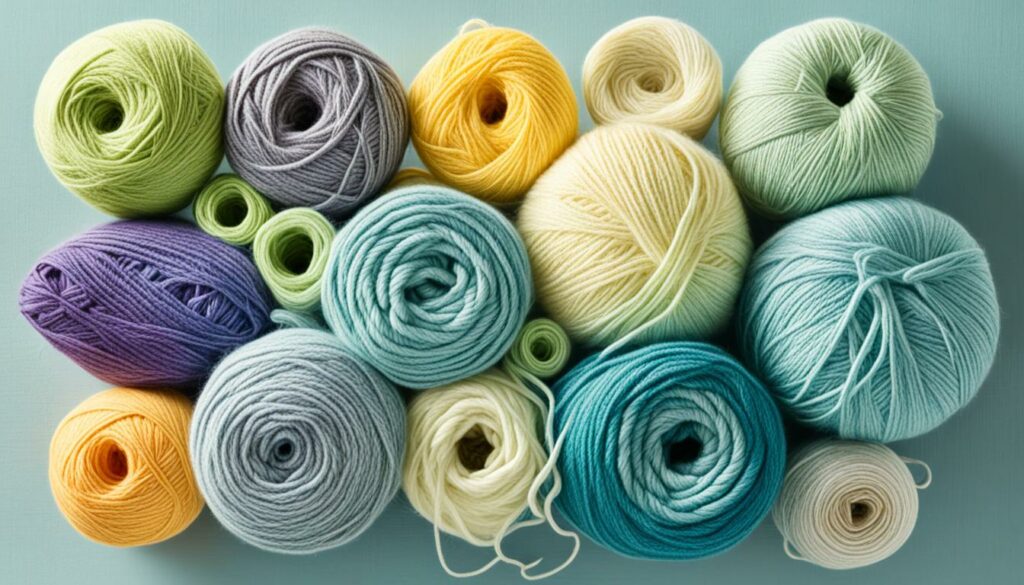
Pros and Cons of Skeins of Yarn
Using skeins of yarn has its advantages and disadvantages. Let’s explore the benefits and drawbacks of working with skeins.
Advantages of Skeins
- Suitability for various yarn types: Skeins of yarn are available in a wide range of materials and weights, making them suitable for different types of knitting projects. Whether you’re working with wool, cotton, acrylic, or any other yarn type, you’ll likely find it in skein form.
- Easy availability: Skeins are widely available in craft stores, online marketplaces, and even at your local yarn shop. Their popularity and easy availability make them a convenient choice for many knitters.
- Convenience for beginners: For those new to knitting, skeins provide a user-friendly starting point. They are already wound into a compact shape, ready to be worked with right away.
- Important yarn information: Skeins often come labeled with vital information about the yarn, such as fiber content, weight, yardage, and washing instructions. This makes it easier to match the yarn to your project’s requirements.
Disadvantages of Skeins
“As you unwind the skein, the yarn may lose its shape and become tangled.”
- Skein shape: One potential disadvantage of using skeins is that as you unwind the yarn, it can lose its initial shape. The unraveling process can sometimes lead to tangling, making it more challenging to work with the yarn.
To avoid the tangle and ensure a smooth knitting experience, it is recommended to reroll the remaining yarn into a tangle-free ball. This will help maintain the yarn’s shape and make it easier to use as you progress through your project.
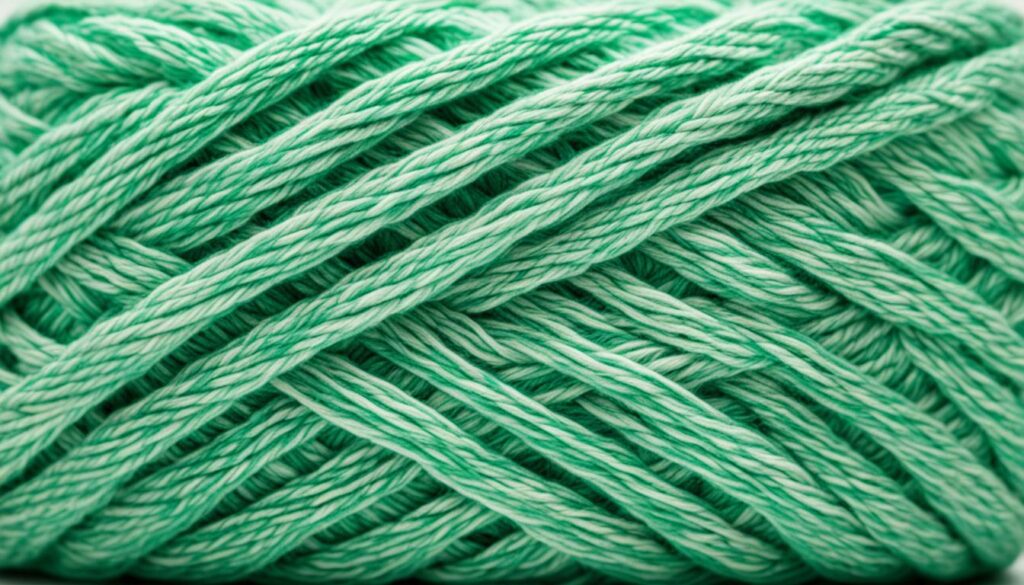
| Advantages of Skeins | Disadvantages of Skeins |
|---|---|
| Suitability for various yarn types | Skein shape: possible tangling |
| Easy availability | |
| Convenience for beginners | |
| Important yarn information |
In the next section, we will explore other shapes of yarn, such as balls, hanks, cakes, and cones, and discuss their unique characteristics and considerations.
Other Yarn Shapes and Considerations
In addition to skeins, there are other shapes of yarn that you can choose from for your knitting projects. Let’s explore the different shapes and their unique considerations:
Yarn Balls
Yarn balls are a popular choice as they are easy to work with and convenient to carry around. You can find yarn balls in various sizes, making them suitable for both small and large projects. With a yarn ball, you can easily pull the yarn from the center or the outside, depending on your preference.
Yarn Cakes
Yarn cakes are similar to yarn balls but have a flat, disk-like shape. They are made by winding the yarn into a cake-like shape, which allows the yarn to unravel smoothly as you work on your project. Yarn cakes are great for colorwork projects or for those who prefer a compact and organized yarn option.
Yarn Hanks
Yarn hanks are long loops of yarn that are twisted and tied at regular intervals. They require more preparation before use, as you will need to wind them into a ball or cake before starting your project. However, hanks offer the advantage of being less prone to tangling, making them a good choice for delicate or unique yarns.
Yarn Cones
Yarn cones are typically used for industrial or specialized applications, such as weaving or machine knitting. They come in large quantities and are commonly used by professional knitters or textile manufacturers. If you are working on a large-scale project or require yarn in bulk, yarn cones may be a suitable option.
The choice of yarn shape ultimately depends on personal preference and the specific requirements of your project. For beginners, skeins or balls are often recommended due to their simplicity and ease of use. When selecting your yarn, consider factors such as the yarn weight, fiber content, and the pattern you plan to use.
Remember, the goal is to find a shape that works best for you and enhances your knitting experience. Happy knitting!
| Yarn Shape | Advantages | Considerations |
|---|---|---|
| Yarn Balls | Easy to work with; convenient for on-the-go projects | May unravel if not stored properly |
| Yarn Cakes | Smooth yarn unwinding; suitable for colorwork projects | Require winding before use |
| Yarn Hanks | Less prone to tangling; suitable for delicate or unique yarns | Require winding before use |
| Yarn Cones | Available in bulk; suitable for industrial applications | Not commonly used for regular knitting projects |
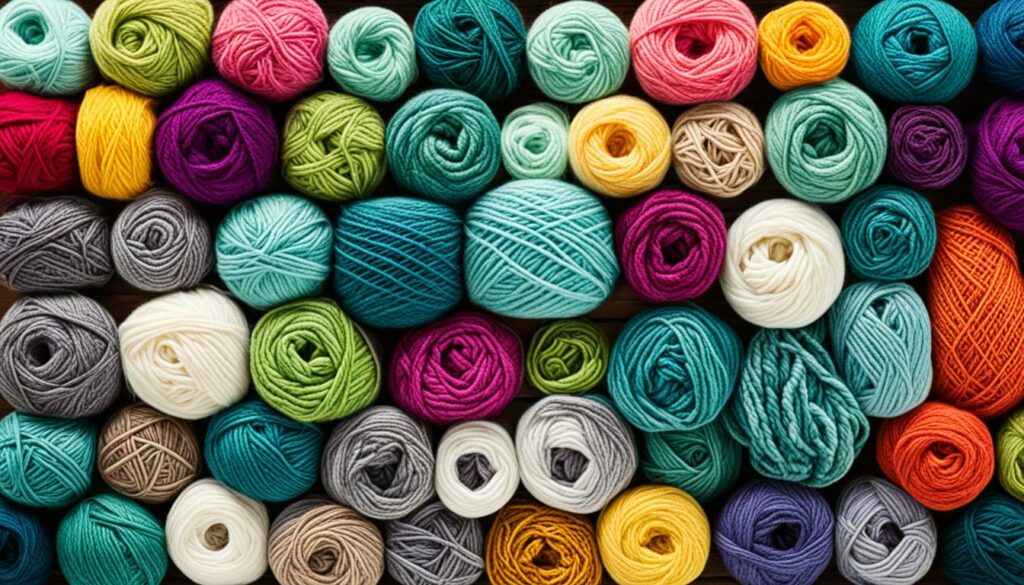
Conclusion
Understanding the lengths of yarn skeins is crucial for successfully completing your knitting projects. By considering the factors that affect yarn length, measuring yarn skeins accurately, and choosing the right yarn shape, you can ensure a smooth and enjoyable knitting experience.
When it comes to determining yarn length, factors like tension, relaxation, and shrinkage play a role. It’s important to wash and dry your yarn, count the strands, and calculate the total yardage using a tape measure. This yarn length guide will help you make accurate estimations for your projects.
Additionally, selecting the right yarn shape is essential. While skeins, balls, cakes, hanks, and cones all have their advantages, beginners often find skeins or balls easier to work with. Consider your personal preference and project requirements to choose the ideal shape.
Remember to match the recommended yarn length in your patterns and have extra yarn on hand. This ensures you have enough yarn and avoids potential setbacks. With these tips in mind, you’re now ready to embark on your knitting journey. Happy knitting!
